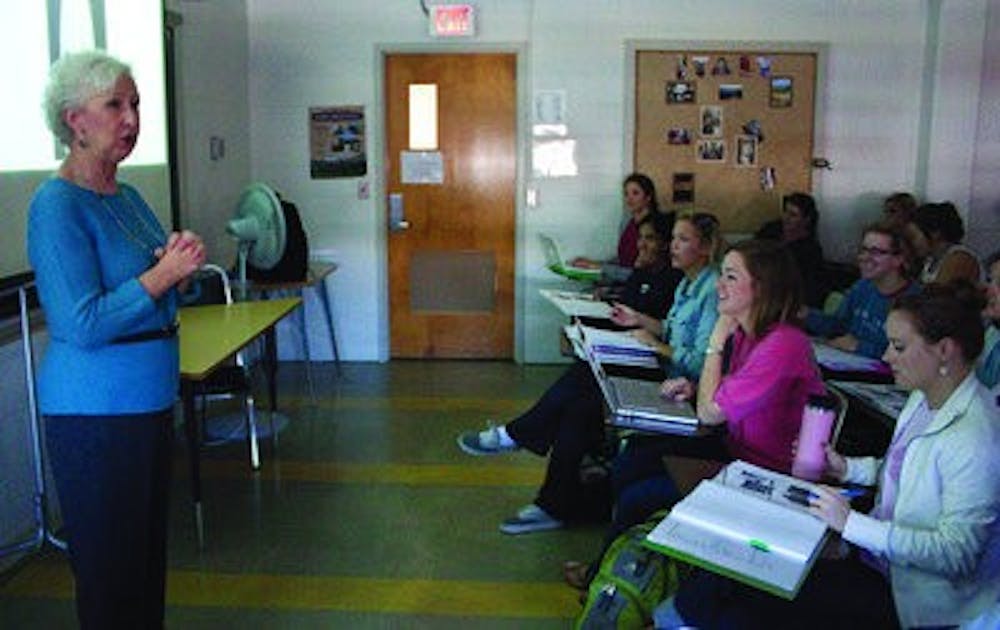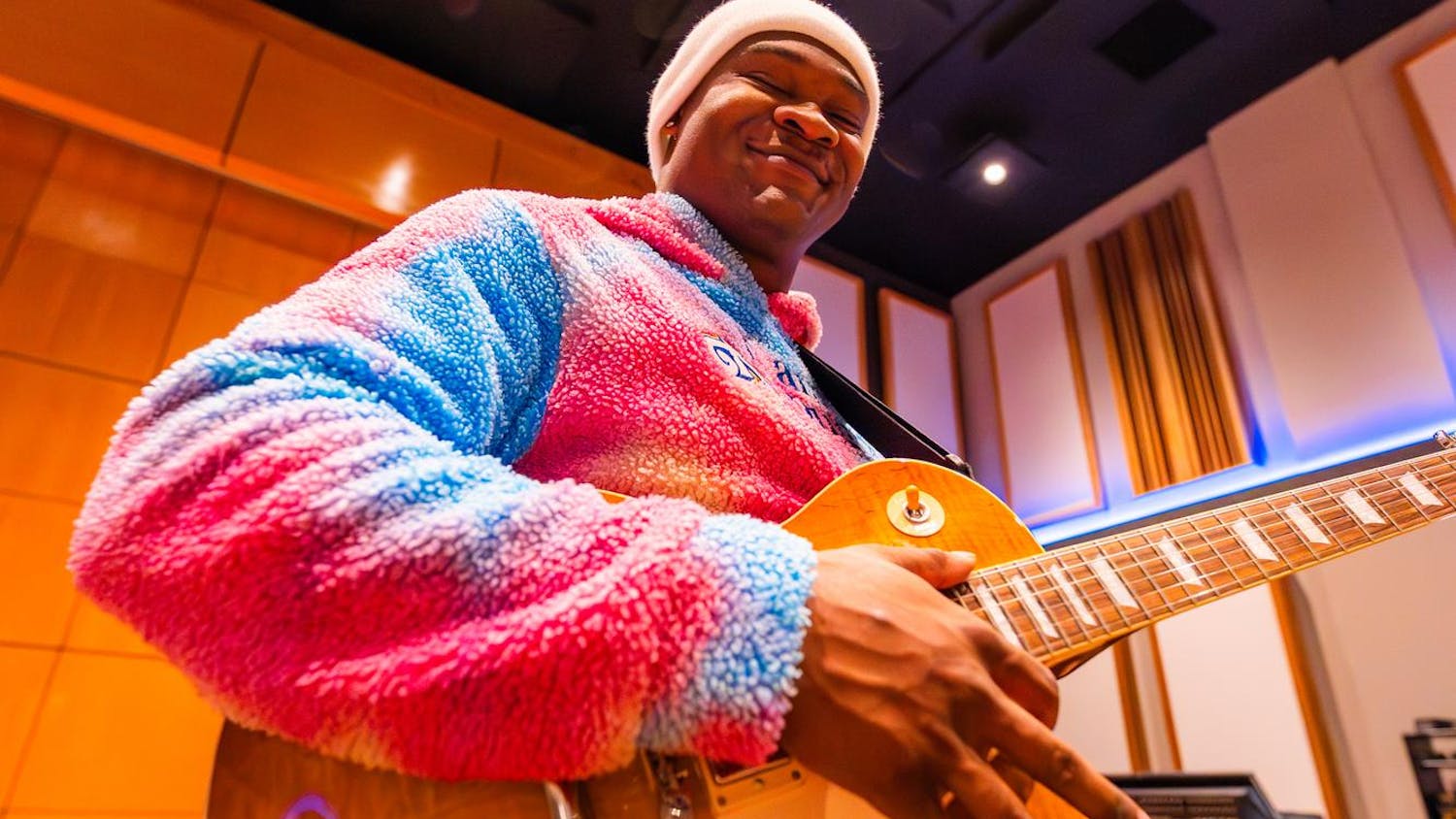Students in the class History of Costume see history from a different viewpoint--through clothing.
Pamela Ulrich, professor of the History of Costume class, has been teaching the subject since the 1980s.
Ulrich said the term "costume" applies to everything people wear or carry with their bodies, as well as what people do to alter their appearance.
"It's hair, it's hats, it's makeup, it's plucking hair, plucking eyebrows--it's everything that we put on our body and do to our body to manipulate our appearance," Ulrich said. "So that includes using costume for theatre, but it's actually what we do--alternative words for the class would be history of clothing, but that technically means the garments, whereas costume is taken to mean everything."
Topics in the class include how costume portrays status, the styling of clothing, what costume symbolizes, the complexity of clothing and the differences in men's and women's fashion.
The class material could prove helpful for those wishing to pursue a career in apparel merchandising, said Erin Rogers, junior in apparel merchandising.
"I think it definitely helps you learn why some of the things that we wear today are there because some of the fashions started thousands of years ago, and you don't even realize it," Rogers said.
She said the class began by covering costume in Mesopotamia and Egypt and then went on to cover the Greeks and Romans. Currently, the class is studying 15th-century fashion and will move into Shakespeare's 16th-century costume before the next test.
"In the 14th and 15th centuries, there's a lot more terms and definitions and more intricate stuff to the garments that you wouldn't notice if you just picked up a history book and were looking at people wearing those outfits," Rogers said.
The changes in costume that the class is now studying demonstrate an evolution in clothing from pure function to something that is more interesting and defines identity, Ulrich said.
"The closer we get to the present, the more important fashion change is in driving what people wear or what they choose not to wear," Ulrich said.
Ulrich said references for the historical clothing come primarily from pictures or pieces in museums, but the earlier in history the clothing originates, the more she has to rely on illustrations or literature for evidence.
Stephanie Hutchings, junior in apparel merchandising, said the class is challenging because the tests are essay format and require students to compare and contrast a large amount of historical content.
"It's basically a world history class about what people wear," Hutchings said.
Ulrich said the students seem to enjoy the class because it is a whole new way of looking at history.
The class is required for majors in apparel merchandising, design and production management. Starting this summer, the class will be available to nonmajors.
Ulrich said students in the major range from people who want to work in design, management, retail, advertising, marketing and global sourcing.
Do you like this story? The Plainsman doesn't accept money from tuition or student fees, and we don't charge a subscription fee. But you can donate to support The Plainsman.





